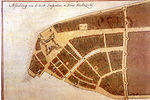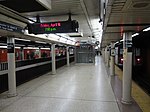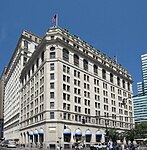George Gustav Heye Center
1922 establishments in New York CityBowling Green (New York City)Financial District, ManhattanMesoamerican art museums in the United StatesMuseums established in 1922 ... and 4 more
Museums in ManhattanNational Museum of the American IndianNative American museums in New York (state)Use mdy dates from April 2020

The National Museum of the American Indian–New York, the George Gustav Heye Center, is a branch of the National Museum of the American Indian at the Alexander Hamilton U.S. Custom House in Manhattan, New York City. The museum is part of the Smithsonian Institution. The center features contemporary and historical exhibits of art and artifacts by and about Native Americans. The center has its origin in the Museum of the American Indian founded by George Heye in 1916. It became part of the national museum and Smithsonian in 1987.
Excerpt from the Wikipedia article George Gustav Heye Center (License: CC BY-SA 3.0, Authors, Images).George Gustav Heye Center
Broadway, New York Manhattan
Geographical coordinates (GPS) Address Website Nearby Places Show on map
Geographical coordinates (GPS)
| Latitude | Longitude |
|---|---|
| N 40.704166666667 ° | E -74.013888888889 ° |
Address
Alexander Hamilton U.S. Custom House
Broadway 1
10275 New York, Manhattan
New York, United States
Open on Google Maps











